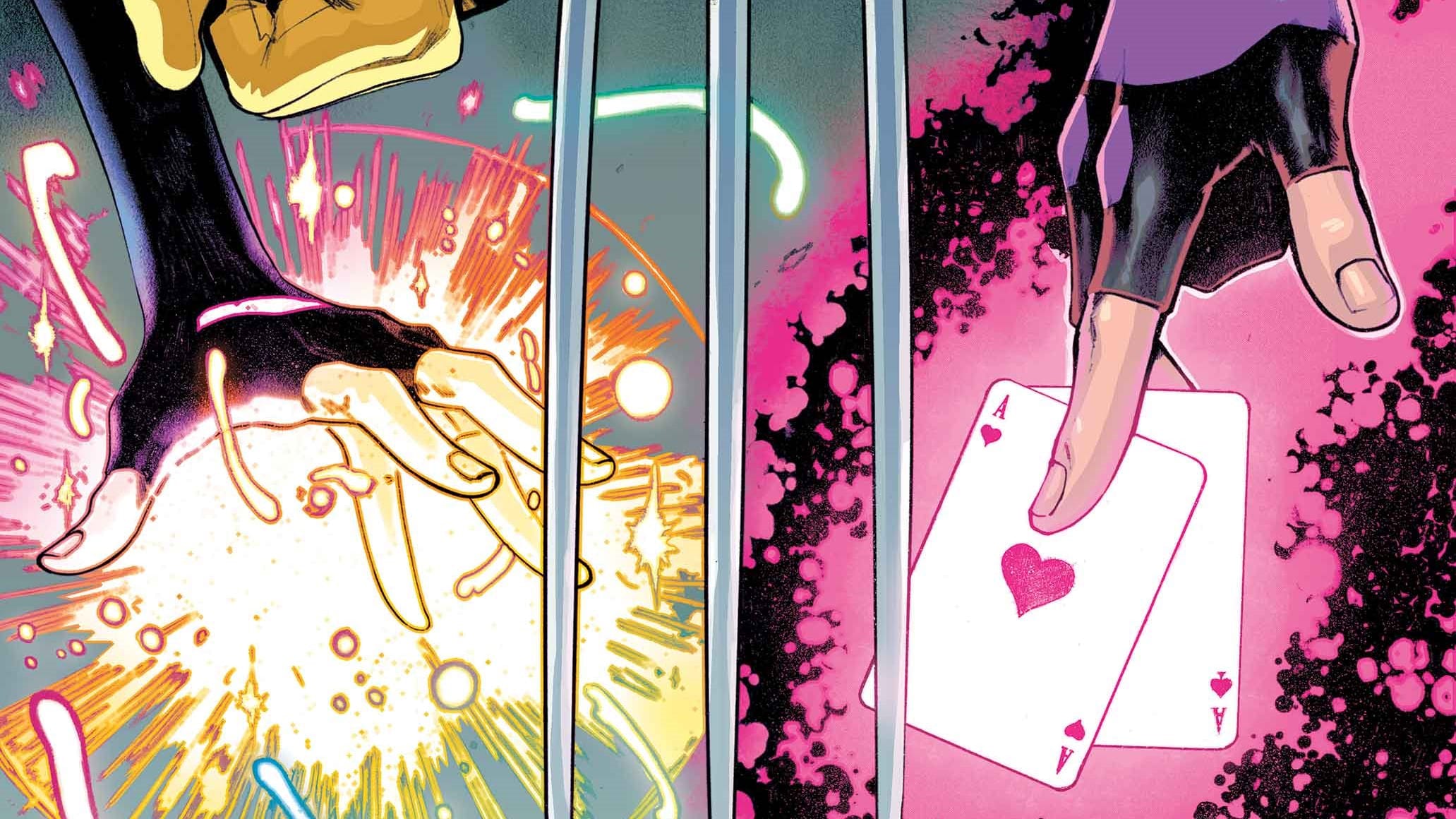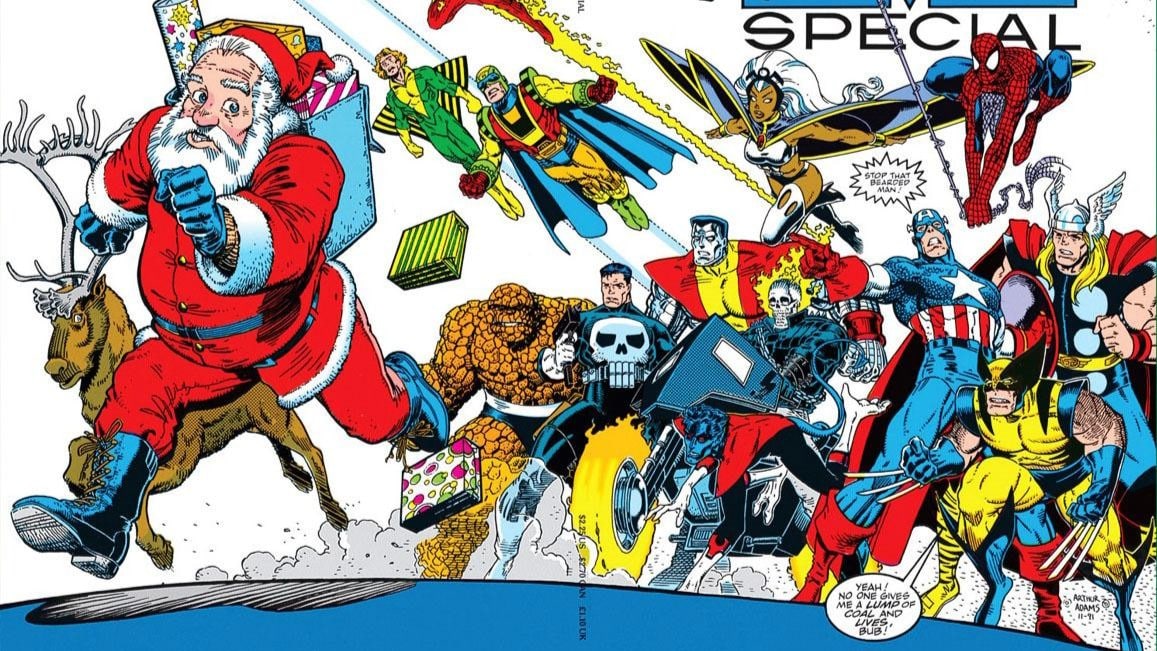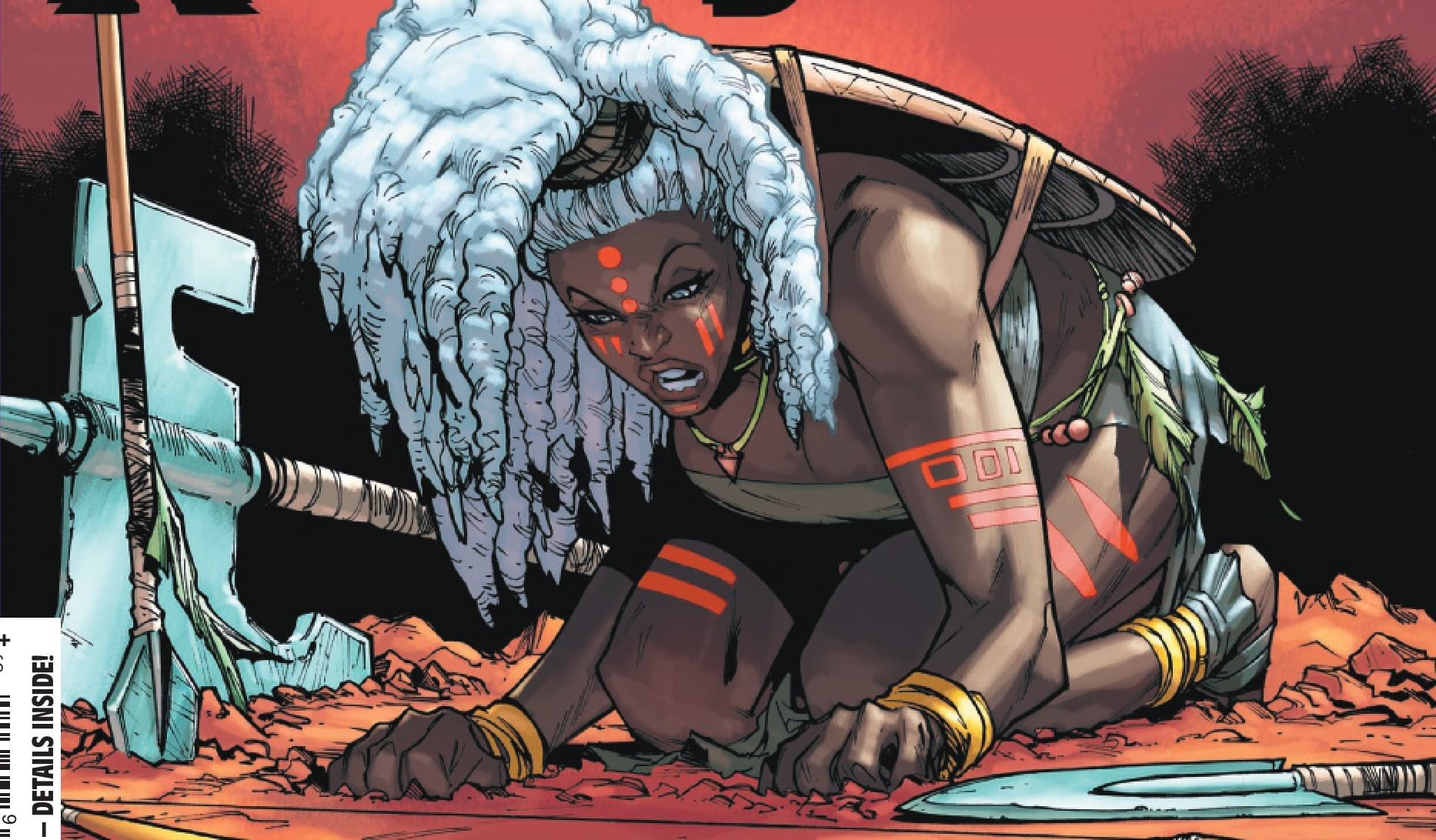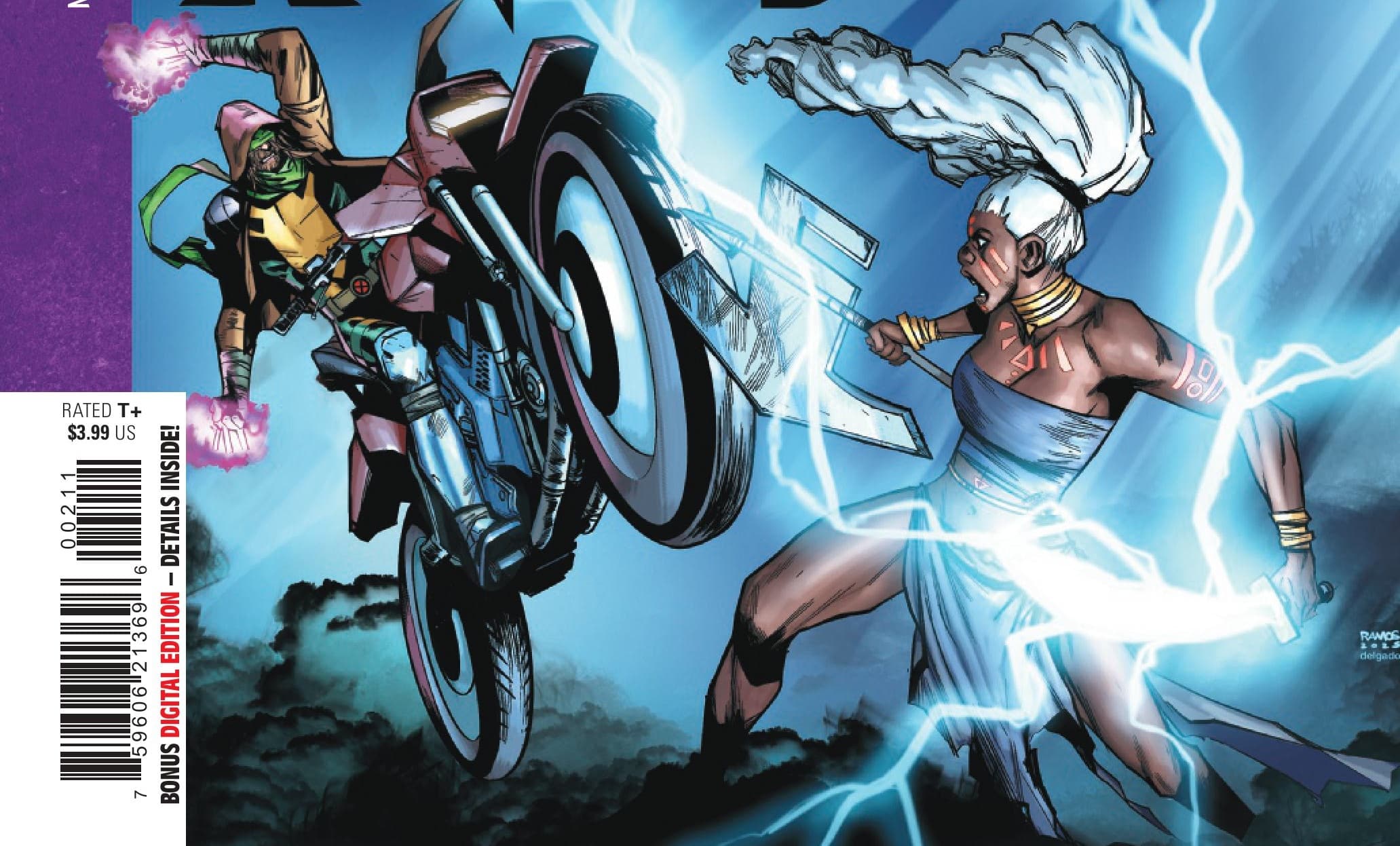The X-Men find new uncanny purpose while reckoning with doubts, dragons and regression in this latest, horror-tinged installment of the From the Ashes reboot. Uncanny X-Men #1 is written by Gail Simone, drawn by David Marquez, colored by Matthew Wilson and lettered by Clayton Cowles.
Jake: So, the X-Men are Uncanny again.
It’s strange just how much of a loaded statement that is. Despite it being the home of Chris Claremont’s revolutionary approach to superhero storytelling for 16 years, the decision to restart the Uncanny X-Men title feels like a “return to old-fashioned values” kind of move. Since the announcement of the From the Ashes era, and the precipitous fast decline of Fall of X, the move toward a more conservative approach to X-Men stories has been inevitable. After the paradigm-shifting Krakoa era (I know, I know, just the first half), a simplify-and-sanitize approach was sure to follow. Such is the cynical nature of Big Two comics.
After four #1s over the past four weeks, From the Ashes has left me a little cold. Burned out might even be more appropriate. So I have to admit a sense of trepidation when approaching the most “classic” looking book of the entire line. But before we get into first reactions, Anna, what was on your mind heading into reading this issue?
Anna: Me and lots of women in and around comics have a healthy respect for Gail Simone, whose influence is sometimes either taken for granted or neglected. I won’t claim to have read every single one of Simone’s comics, but her writing and legacy mean a lot to me, speaking as a woman who spent years trying to find a place to belong in comics and a language to express all the ways and reasons that superhero comics, in particular, have often made it difficult to be a fan who also happens to be a woman and a feminist. So I’ve been excited to see how Simone would shape this storied title and its many powerful women — as well as its many powerfully crushable men. But there’s also a weight of expectation here that’s hard to shake, and I’m trying not to let comparison be the thief of joy.
Jake: I have to say, I enjoyed this issue more than I expected. That is to say, I thought it was pretty good. There are two key reasons for that: David Marquez’s beautiful line work, and Simone’s Rogue. Now there are some caveats on the second point, which we’ll get into later, but in some ways it’s quite simple: I have a huge soft spot for Rogue-led stories.
Anna: Some of Rogue’s interior monologue definitely showcased Simone’s talent for painting the complex interior lives of women who punch dragons on Tuesdays. But we’re getting ahead of ourselves — onward to the review!
Charles Xavier’s refurbishment budget

Anna: The setup for the story involves new Big Bad Dr. Corina Ellis, first introduced in the X-Men Free Comic Book Day story, arriving at the former site of Xavier’s School for Gifted Youngsters with a heavily armed subordinate and her telepathic assistant Phillip in tow. Ellis wants to turn the mansion into some kind of mutant prison as a symbol of hate and fear and all those X-Men franchise buzzwords. And apparently, she has enough mystery money backing her up to make this extravagantly evil dream a reality.
I have some misgivings about the fact that between Dr. Ellis and Chief Paula Robbins, introduced a month ago in X-Men #1, two of the X-Men’s new institutionally affiliated antagonists are women of color. Having women of color be the face of anti-mutant (or at least, in Robbins’ case, mutant-wary) public sentiment doesn’t feel especially true to life, since actual right-wing figureheads are definitely, obsessively invested in white supremacy (not to mention patriarchy). While part of good representation is giving everyone a chance to be evil, these choices risk muddying or otherwise defanging the political allegory underpinning these stories. Hopefully, Ellis will get fleshed out in future issues in ways that allay my misgivings. For now, I’m enjoying her outfits and biding my time.
Jake: Agreed. Simone’s dialogue and Marquez’s design and rendering come together here to create a character with the sort of commanding confidence that only extremely rich and incredibly well-dressed people possess (presumably). The combination of this charisma with the sheer intensity of her hatred makes her a compelling villain, and I’m also curious to see how her story plays out.
Anna: I’m also chock full of questions about when or why the X-Men would have refurbished the mansion with all their oft-destroyed mementos, including framed photos, uniforms in glass cases, and a plush Lockheed on a nightstand. This nostalgia for the mansion was always going to hit weird for those of us who were happy to see mutants graduate from the mansion to Krakoa — like one of those bad dreams where you have to repeat high school because some records keeper found out you flunked a math exam a decade ago (really hoping I’m not the only person who has those). But the illogical aspects of this bid for nostalgia made it an even harder sell for me personally. What was your mileage on this setup, Jake?
Jake: I just feel for whoever had been caring for the mansion during the Krakoa era. Maybe they let Toad out of the pit on day release to reprise his old job and restore the mansion to its former glory. He’ll be devastated to see his good work undone, I’d imagine.
Totally agree, though. The fact that the mansion is framed as the symbol of mutant achievement is very old hat to anyone who’s just lived through the Krakoa era. The fact that it’s described in-story by Ellis as the ultimate status symbol of mutant power is even more irksome. Like, they just established a literal nation. Come on.
Anna: They terraformed Mars, for frak’s sake. What’s a dusty mansion compared to that?
Jake: In terms of the wider setup, the opening scene worked quite well. It establishes Ellis’ anti-mutant manifesto, which frames the events of the issue by weaving a thread through ostensibly unrelated events. Her MO is as clear as it is cruel: enforce control through a blanket campaign of fear. She means to flush mutants in hiding out in the open, casting suspicion on their motivations and inviting the ire of the general public. This is an interesting evolution to the events of Fall of X, in which mutants isolating themselves from the rest of the world for their own protection was against them. This residual paranoia is fuel for Ellis’ fire here, as well as creating the pervasive sense of fear that makes the horror tropes work. Whether through the monster attack in the woods, or the mysterious and tragic illness that claims Harvey X’s life, there’s a sense that mutants are being victimized from all angles and at random. Nothing new, sure, but it works.
The thief, the hunter, the scared little girl and … the Father?

Anna: From the site of the mansion-turned-prison, we jump to Mexico City, 24 hours ago, where Logan is saying goodbye to an old friend who gives him a presumably potent bottle of something. As far as I’m aware, Miguel is a new character, but we’ve seen this bit before — Logan saying emotional goodbyes to briefly sketched figures from his exceptionally long, still-shadowy life. I’m not sure whether we’ll see Miguel again, but it doesn’t really matter. The point is establishing this series’ version of Logan in general and in his present emotional state. Logan, like Rogue, is in the mood to long for belonging. But because he’s an X-man, that search for belonging is going to take him next to Teotihuacan, to fight a talking demonic dragon who just happens to possess the other Eye of Agamotto. Speaking of Rogue …
Jake: Let’s talk Rogue then. She wasn’t particularly well served by the Krakoan era. Stories in which she wasn’t just a battering ram focused on her family relationships, which created drama for Rogue to deal with but didn’t give her much internality. They instead focused on her relationship with Gambit, which is so rock solid that there’s almost no problem they can’t overcome together, including drama created by agents of chaos Destiny and Mystique. The character was crying out for a spark of tension to get her story going again.
It’s clear that Gail Simone has a lot of love for this character, which you can tell by the emotional toil she puts her through in this issue. Rogue has such a bombastic personality that it’s very easy to resist introspection, but her inner conflict is essential. Despite her physical invulnerability, she’s emotionally vulnerable; despite her generosity, she can’t help but take from others; despite the balance of her relationships with others, her own sense of equilibrium is influenced by the composition of her powerset. It’s these questions that Simone is interested in.
It has to be said that the characterization in earlier parts of the issue are way over the top, to the point where it temporarily took me out of the story. Southern drawl dialed up to infinity Mississippis, sexuality dialed up to “100% X-Men,” the dialogue verged on cringe a little bit for me at times. Again, this is about establishing contrasts within the character. It’s an expedient way of establishing the fun-loving powerhouse superhero as a counterpoint to the more downbeat characterization we get in the second half of the issue. Now it may be because I’m a massive emo, but a maudlin Rogue really appeals to me.
The scene where she’s reflecting on her struggles to readjust to the “real world” and her lack of purpose rang true to me based on the character’s history. It also gives the character room to grow. Gambit questioning the X-Men’s responsibility “for every weight ever loaded on the world” is a pertinent one, given the lessons that Krakoa could have taught them, but it cuts to Rogue’s very core: In the face of an identity crisis, a purpose is what she needs most of all.
After witnessing the tragic death of 12-year-old mutant Harvey X, she’s determined to protect those who need it. The appearance of the young mutants The Outliers would appear too good to be true, which is sure to test Rogue’s faith and resolve in interesting ways. The maudlin aspect also harmonizes well with the gothic genre exploration we began to see in the scene with Fawn, which is a huge part of the appeal of this series to me.
The source of this character change is also a potential issue for me. The presence of magic in a character change as seismic as this invokes doubts about how “real” the emotional journey we’re about to see Rogue go through really is, which can cheapen the story. I think it’s more likely that Rogue’s emotions are being heightened or brought to the surface in some way, which is slightly better but still overcomplicates something that’s quite simple for me: that the dejection of a failed dream and the feeling of powerlessness in the face of trauma can change a person, dragon or no dragon.
Nevertheless, it’s David Marquez’s beautiful line work that sells the emotional beats for me. Rogue’s face is rich with emotion in every panel, looking forlorn while somehow conveying a glimmer of hope. It’s absolutely stunning work and is worth the price of admission alone.
Anna: My one complaint, such as it is, about the characterization of Rogue is the bit where she says that before joining the X-Men, she had nothing and no one. This is a rather unfortunate sentiment coming hot on the heels of the wedding of Rogue’s moms, Mystique and Destiny. But yes to the glory of Marquez’s work on this issue. His art has the requisite softness and sensitivity for this issue’s quiet character moments and all the fluid energy and joy required to make what could have been a generic scene of supers suffering a monster feel exciting and monumental. Where action is concerned, the half-splash of Rogue punching the dragon particularly stands out — a lovely merging of character-driven power and beauty.
But Rogue isn’t the only character experiencing a change in status quo. My guy Kurt Wagner also seems in search of guidance. I hate being the person who always has to readjust my glasses, take a breath, clear my throat and say well actually, Nightcrawler isn’t a priest. But apparently, this is my cross to bear, so here we go again.
Kurt first appears in a priest collar in 2000’s X-Men Vol. 2 #100, following an off-panel six-month time skip. Eight months of publishing time later, before explaining how or why Kurt pursued priesthood, writer Chris Claremont was reassigned. Then, in 2003’s Uncanny X-Men #423-424, penned by Chuck Austen, Kurt’s priesthood was revealed as an illusion created by the anti-mutant cult the Church of Humanity, who wanted to install Kurt as the pope as part of a master plan to make mutants look bad. Or something. There were exploding communion wafers involved, and it was all very silly. But then, so was Kurt becoming a priest in a few months off panel.
Most recently, writer Si Spurrier acknowledged, in the first issue of Legion of X, that Kurt’s priesthood was an illusion. Kurt has also spent the past couple years of comics promoting a mutant religion called The Spark. Here, though, Kurt is being addressed as “Father” and delivering Catholic last rites, apparently at his own request rather than the request of the family or the deceased. If Kurt managed to go back to seminary and get properly ordained (once again in a few months off panel), this would be a significant departure from the last time we saw him.
The reason this grinds my gears is that it’s more than a small messy continuity detail. Whether a character is a Catholic priest is kind of a big deal to how that character operates, emotionally and symbolically. If Kurt is a priest, we deserve to know when, how and why this happened. I’m all for being respectful of the character’s faith, but this inconsistency and apparent misunderstanding about what’s actually required to become an ordained Catholic priest doesn’t feel very respectful. Also, I assure you — it is possible to depict a character as Catholic without making that character a priest. Maybe we could go back to trying that? I’m begging you — for the sake of my own Nightcrawler-loving sanity.
Jake: Anna, I feel for you and the rest of the Kurt Wagner congregation (sorry). This is a detail thrown into a scene so casually, callously even, that you’re left to divine what this could mean moving forward with very little to go off.
Kurt’s place in this story is a little unclear at the moment. With Rogue’s desire for purpose seemingly aligning with the introduction of our four new mutants, The Outliers, at the end of the issue, I worry a little bit about how the allusion to Kurt’s priesthood will coalesce. Lost kids, looking for direction; religious authority figure attempting to provide it — it’s not that kind of story, is it?
Look, I’ll confess to concern trolling a bit here. But I am genuinely perplexed as to how this fits into the story. I really hope we’re reading too much into it.
Anna: I’m similarly apologetic about spending so much time on what might seem, to some folks, like a relatively minor point. But if you’ve been reading the Krakoa books, you know — a few short months ago, Kurt was committed to offering mutants a new, non-denominational framework for spiritual guidance and healing after recognizing that Catholicism, in its traditional, institutional form, was not as inclusive of mutant realities (and his own values) as it needed to be. So this “Father” thing really threw me for a loop. If this is what we’re doing with this character, it’s a significant regression. Anyway — we’ll see how things develop.
There’s always an emo

Anna: Following Harvey’s death at the hospital, our team both splits and coalesces, with Kurt going off to support the young boy’s family while Remy, Rogue and Logan retreat to the house of one of Remy’s friends in Louisiana, where they drink and deliberate on the past and their plans until their future conveniently arrives on their doorstep (or rather, the edge of their campfire), in the form of four new mutants (but not those New Mutants), accompanied by an equine companion.
This introduction of new mutants is another one of those difficult things for me, because we left so very many mutants behind when we left Krakoa (and Arakko). It’s hard to open my heart to new faces when I’m still mourning those losses. But if I want to meet this book halfway, I know I need to approach these newcomers with an open mind, and I’m determined to try my best.
Jake: My love of classes of new mutants has always correlated with the length of time they’ve been in publication. The Arakkii were the exception to that. Getting anyone to care about these new kids is going to be a challenge for not just this book but for many of its From the Ashes counterparts, and you can’t help but feel that the sheer number of new characters is just going to muddy the waters. The law of averages suggests that one character per generation will capture the audience’s imagination enough to have any sort of longevity. I almost always support the emo kid, and I notice there’s a guy with a My Bloody Valentine-ass haircut on the final page of this issue. Intriguing.
Anna: All in all, there was some good stuff here that makes me excited about the next issue, as well as some confusing continuity stuff and potential character regression stuff that has me feeling nervous about the next issue. But such is the roller coaster of monthly comics publishing, especially when we’re waist-deep in a reboot. One thing’s for sure — as long as Marquez is on art, this book will be damn nice to look at.
X-Traneous Thoughts
- While most of Kurt’s stuff in this issue made me edgy and frustrated, his turtleneck game was strong.
- I strongly disliked Harvey yelling “You are so hot!” at Rogue. Sure, he’s a kid who lacks impulse control who’s also on the verge of dying from a brain tumor. But for a moment that was supposed to help inspire Rogue to great things, I’m not sure if making her deflect awkward objectifying comments from a child was the most effective choice.
- The introduction of Fawn was suitably spooky but couldn’t help but recall the unfortunate fate of Nature Girl.
- Rogue inviting Logan to watch her and Gambit smooch was an eyebrow-raising moment in the issue. Logan was counting his lucky stars that his bike had been destroyed so he could “catch a hitch.” Sure thing, bub.
- Why was the dragon so sexist? “Tavern Wench”? Really dude? Also, what THE HELL is a Pufnstuf?
- I would discourage any readers who are not familiar with the nightmare-fueled hellscape of Sid and Marty Krofft’s ostensible children’s entertainment program H.R. Pufnstuf from learning any more about it. Save yourselves from this terrible burden of knowledge.
Buy Uncanny X-Men #1 here. (Disclaimer: As an Amazon Associate, ComicsXF may earn from qualifying purchases.)







